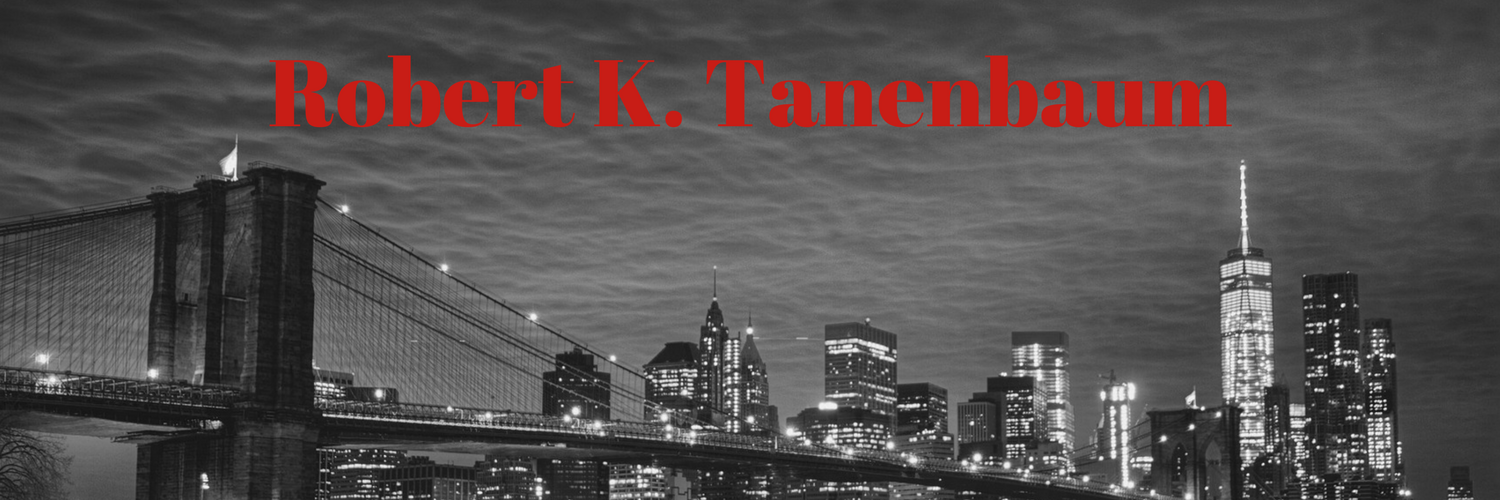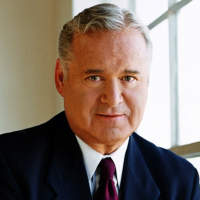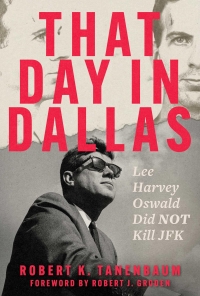Op-Ed Article Regarding Herman Bell
Mar 26, 2018 by Robert K. Tanenbaum
On Friday evening, May 21, 1971, when Herman Bell (Bell) ambushed
and summarily executed NYPD Officers Waverly Jones and Joseph Piagentini
as they were walking toward their squad car parked at 159-20 Harlem River
Drive (Colonial Park Housing) in the northeastern end of Manhattan, I was an
Assistant District Attorney assigned to the Homicide Bureau in the New York
County District Attorney’s Office during the tenure of legendary District
Attorney Frank S. Hogan. Then Homicide Bureau Chief, Assistant D.A. John F.
Keenan, now Federal District Court Judge in the Southern District of New York,
assigned to me the responsibility to investigate and prosecute the case entitled
People of the State of New York v. Herman Bell, et al.
On April 10, 1975, after jury trial, Bell was convicted of the murders of
Jones and Piagentini. On May 12, 1975, New York State Supreme Court Judge
Edward Greenfield, who presided during the trial, sentenced Bell to a term of
life imprisonment with a mandatory minimum of twenty-five years, the
maximum sentence at the time pursuant to State law.
Recently, the State Board of Parole issued on April 17, 2018, parole
release date for Bell. Given the urgency of the matter, a request for a Rescission
Hearing before the Parole Board is necessary to remedy this patent unlawful
order. Here’s why.
Newly discovered evidence, the Sentencing Record Minutes in the case of People
of the State of New York v. Herman Bell et al. which was not known
by the board when it issued its parole release date, contains significant
information, to wit, inter alia:
1. Statements to the Court uttered by Bell and his crime partners that
they are self-proclaimed members of the Black Liberation Army (BLA),
revolutionaries who are at war with society and seek to continue to engage in
the violent overthrow of our government.
2. Defense Counsel Mogulescu, (see Sentencing Minutes pages 166-
171) while addressing the Court on the issue of sentencing, informed that
having dealt with the defendants over a three year period, he got to know them
well and that they are men who felt compelled to take action. A full and complete copy of
May 12, 1975 Trial Sentencing Record Minutes is attached hereto.
Mr. Mogulescu continued: “They perceive themselves to be in a war
with the State...They are beyond rehabilitation. There is no question of that
because they feel unless our society is restructured and overthrown, that there
is no justice, that there is no hope, that there is no way. That is their
position...”
3. Judge Greenfield commented, inter alia, at Sentencing Minutes
pages 172-181: “The Court has heard a great deal of revolutionary rhetoric
uttered in this Courtroom. Obviously, it was not uttered for the purpose of
impressing the Court or influencing it in any way on the question of sentence.
Most of it was delivered with backs turned to the Court and addressed
presumably to some superior tribunal...and we have heard about a people
oppressed and dehumanized but we deal here with men who oppressed and
dehumanized other people, deprived them of their lives.
I deal necessarily with the men who are before me but I deal also with
the men who have fallen and whose memories have not been obliterated by
bullets...these defendants, although they are spared the risks of capital
punishment, had no aversion to inflicting capital punishment upon others...
and they inflicted that capital punishment not for a crime of murder but
because Patrolman Waverly Jones and Patrolman Joseph Piagentini, a black
man and a white man, were guilty of the crime of representing the people as
members of the police department of their municipality. They were guilty of
the crime of coming to the aid of an injured woman who had called for help.
They had committed no wrong, real or fanciful, against these defendants.
These defendants, came from California for the purpose of shooting police
officers. Patrolman Jones and Patrolman Piagentini weren’t trying to destroy
their political activities in California. They were doing their job in New York.
And they met their death on a call to help someone....There were no charges
preferred against them. No trial. They had no defense and they will never be
afforded the opportunity of an appeal. What they faced was the instantaneous
snuffing out of their lives, coldly and impersonally and savagely. Acts which
were then followed by a celebration that the enemy, unaware, had been
slain....” ... “If indeed this is a war, a war against society, then any
revolutionary must expect that society will not sit supinely by, that it will
protect itself, that it will take steps to avoid and to punish wanton killing.
Every society has that basic right of self-preservation, and that’s what we talk
about here.”
“If indeed this is a war, and if these defendants have been taken prisoner,
then they must face the consequences of their having been captured
by the enemy for they have declared themselves as the enemies of society.
Society acknowledges that and society will react accordingly.”
When taken as a whole, the Sentencing Minutes require with vital
urgency for not only an immediate Rescission Hearing but also for permanent
denial for any future parole release date. The brutal facts of the instant double
murder case coupled with the violent revolutionary at war with society
deranged mindset of Bell resoundingly inform that there is no reasonable
probability that, if such inmate is released, he will live and remain at liberty
without violating the law. Moreover, his release will be incompatible with the
welfare of society and will most assuredly deprecate the seriousness of his
crime as to undermine respect for the law.
I. Legal Factual Analysis
1. Pursuant to Title 9 of the Official Compilation of Codes, Rules
and Regulations of the State of New York (9NYCRR, Subtitle CC, Parts 8000-
8011), “discretionary release on parole shall not be granted merely as a reward
for good conduct or efficient performance of duties while confined but after
considering if there is a reasonable probability that, if such inmate is released,
he will live and remain at liberty without violating the law and that his release
is not incompatible with the welfare of society and will not deprecate the
seriousness of his crime as to undermine respect for the law.” §8002.1
(emphasis added).
2. A Rescission Hearing, pursuant to section 8002.5 et seq., is
required in view of the recent production of the May 12, 1975 Trial transcript
Sentencing Minutes in the instant case. The Sentencing Minutes provide
substantial evidence that require a hearing for reconsideration of the parole
release date granted to Bell. The Sentencing Minutes were not known by the
board at the time when it granted the parole release date.
The Sentencing Minutes
At times during the course of the trial individual defense counsel would
address the Court representing all the defendants. For example, at page 102 of the
Sentencing Minutes, Counsel Mogulescu moved on behalf of all the defendants to
set aside the verdict. To the point, Mr. Mogulescu, immediately prior to the actual
sentencing, addressed the Court speaking about all the defendants, notwithstanding
that he was officially representing the defendant Anthony Bottom. For example, at
pages 170-171 of the Sentencing Minutes, Mr. Mogulescu confirmed that the defendants
are at war with our government: “These men (the defendants) perceive that they are at
war and men are killed at war....”
Most significantly, Mr. Mogulescu continued on the vital issue regarding the
necessity for the Rescission Hearing: “...They perceive themselves to be at war
with the State... They are beyond rehabilitation. There is no question of that
because they feel unless our society is restructured and overthrown, that there is no
justice, that there is no hope, that there is no way. That is their position...”
How does that position square with a parole release order that must conform
with the §8002.1 requirement that there must be “a reasonable probability that, if
such inmate is released, he will live and remain at liberty without violating the law
and that his release is not incompatible with the welfare of society...” Any release
of Bell will not only be seriously incompatible with the welfare of society but also
will deprecate the seriousness of his crime as to undermine respect for the law.
Bell, the self-proclaimed violent revolutionary assassin has already executed Police
Officers Waverly Jones and Joseph Piagentini in Manhattan and shotgun blasted to
death Sgt. John Young SFPD during an attack on the Ingleside Police station in
San Francisco.
Conclusion
In the late 60's early 70's, Bell transitioned from membership in the
Oakland/San Francisco Black Panther Party to the self-proclaimed BLA. He
believed that the Black Panther Party was not sufficiently militant and
reportedly stated: "The BLA will be remembered, and they won't be
remembered as a pacified group of people..." In 1971, at a time relevant to the
instant case, Bell commented that the BLA "was getting to be pretty well
known from the escalation of crimes....The stations, the police stations, other
things that had been done all directed toward police officers, it was beginning
to be known that there was another group besides the Black Panther Party."
The BLA attempted to create chaos and terror through the assassination of
police officers. Its operations were funded by armed bank robberies and other
theft offenses.
Given Bell's deviant and violent delusional belief system, Bell engaged in
serious crimes of violence that included armed bank robbery,2
attacking with
explosives and armed weapons the Ingleside Police Station in San Francisco that
2
On 9/13/75 Bell was convicted of armed bank robbery that occurred on 9/20/71
inside Bank of America at 433 Courtland Avenue in San Francisco. resulted in the shotgun blast murder of SFPD Sgt. John Young and the murders of Jones and Piagentini.
In 1971, Bell travelled to New York City for the purpose of executing police
officers. His chosen method was to ambush his unsuspecting victims.
On May 21, 1971, in the evening when Bell arrived at 159-20 Harlem
River Drive, he noticed that a squad car was already parked at the location.
So he waited with his crime partners Anthony Bottom and Albert Washington,
a look-out. As officers Jones and Piagentini exited the building and walked to
their squad car, Bell, who had been seated on the left front fender of a parked
white Mustang from which his prints were later discovered, fell in step in
back of Piagentini and Jones and with his loaded weapon fired at point blank
range into the bodies of the officers. While Piagentini lay on the ground
pleading for his life repeating, "Please, please, don't shoot, don't shoot. I'm
married, I have two kids," Bell pumped mercilessly shot after shot emptying
his weapon into the defenseless stricken body of Joseph Piagentini. Bell then
grabbed Piagentini's service revolver and fired again and again into
Piagentini's bullet-ridden body.
Bell fled the scene and returned to his Anderson Avenue apartment in the
The Bronx, which he shared with his crime partners. Once inside and immediately
after the assassinations, Bell celebrated the murders.
In all, Joseph Piagentini's bullet-riddled body suffered twenty-two bullet
holes as a result of the attack. Waverly Jones was shot four times at point-blank
range in the back of the head, neck and back. Thereafter, Bell left New York and
returned to San Francisco where his crime rage continued.
During the years that Bell fled from law enforcement apprehension, he
utilized false identification documents obtained from individuals previously
deceased. This method of deceit kept him at large while law enforcement searched
the country for him.
Finally, on September 2, 1973, Bell was taken into custody in New
Orleans, Louisiana. Inside his residence was a cache of weapons and phony
identification material.
In July, ’09 Bell pleaded guilty to conspiring to commit manslaughter that
resulted in the shotgun blast death of Sgt. John Young during the attack on the
Ingleside Police Station in San Francisco.
0n 9/13/74 Bell was convicted of armed bank robbery that occurred on
9/20/71 inside Bank of America at 433 Courtland Avenue in San Francisco.
In July, '09 Bell pleaded guilty to conspiring to commit manslaughter that resulted
in the shotgun blast death of Sgt. John Young during the attack on the Ingleside
Police Station in San Francisco.
While Bell now admits to some of his crimes, he chose to maintain his
innocence over the past 40 years. Fundamental to gaining parole, inmates
come to understand that a condition of demonstrating contrition requires
admitting criminal behavior. Given Bell's delusional deviant belief system
and his capacity to engage in extreme violent deceit and manipulations, his
present admissions are much more meretricious than meritorious. Also not
until July '09 did he finally admit to his participation in the planning and
preparation of the armed attack on the San Francisco Ingleside police station
that resulted in the murder of Sgt. John Young. The plan was to kill everyone
inside the precinct and blow up the station house.
At the time Bell snuffed out the lives of Waverly Jones and Joseph
Piagentini, the death penalty was in effect. In 1972 the U.S. Supreme Court
struck it down only to re-instate it in 1976. Bell is the beneficiary of that legal
procedural anomaly. Based upon all the death and endless pain that Bell has
inflicted upon the innocent and defenceless, he is most undeserving of any
further leniency.
Could it not be more morally repugnant and incongruous for the
assassinator, Bell, to be free while Waverly Jones and Joseph Piagentini suffered
assassination and the Piagentini family and others grieve on and on endlessly every
day?
A rational, dispassionate analysis of the totality of Bell's amoral pathology
acted out with nightmarish violence leads inexorably to the following general truth
when evaluating his present alleged contrition: "To show an unfelt sorrow is an
office which the false man does easy." Macbeth.
Respectfully submitted,
Robert K. Tanenbaum


